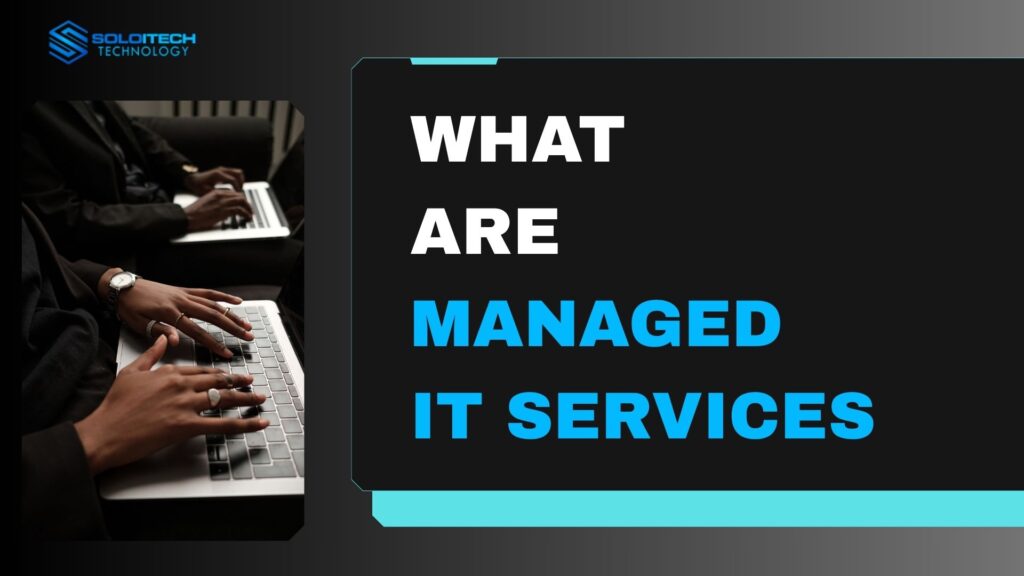From cloud storage and cybersecurity to networks and software applications, managing IT has become both complex and necessary. But what if you could have a team of IT experts handling all of this for you without hiring a full in-house team? That’s where managed IT services come in. In this blog, we’ll look at what managed IT services are, how they work, and why businesses are increasingly turning to them.
What Are Managed IT Services?
In simple terms, managed IT services are when a company outsources its IT operations and responsibilities to a third-party provider, often called a Managed Service Provider (MSP). Instead of managing IT internally, businesses pay for these services to ensure their technology systems run smoothly and securely.
Think of it as hiring a dedicated IT team without the overhead of salaries, training, and infrastructure. Managed IT services can cover a wide range of tasks, including:
- Network management: your network is fast, secure, and reliable.
- Cybersecurity: your data is safe from hackers, malwar, and other threats.
- Cloud services: cloud storage, cloud computing, and remote access.
- Data backup and disaster recovery: your information is safe and recoverable in case of an emergency.
- 24/7 IT support: issues are resolved before they disrupt your business.
Managed IT services make technology a strength for businesses, not a headache.
Why Businesses Are Choosing Managed IT Services
There are several good reasons why more businesses are turning to managed IT services:
1. Cost-Effective
Hiring an in-house IT team can be expensive. Salaries, benefits, training, and infrastructure costs can add up quickly. With managed IT services, you pay a monthly fee. This means affordable IT management without compromise.
2. Access to Expertise
Technology moves fast. A small IT team can’t keep up with every software update, security threat or compliance requirement. Managed IT service providers bring specialist knowledge and experience, giving businesses access to high-level expertise they may not have in-house.
3. Proactive Monitoring and Maintenance
Managed IT services don’t just fix problems, they prevent them. MSPs monitor systems to detect issues before they cause downtime. This proactive approach means smoother operations and fewer costly disruptions.
4. Security
Cyber threats are always evolving, and one breach can be catastrophic. Managed IT services include state-of-the-art security such as firewalls, antivirus software, encryption, and employee training. This means your business is protected from modern cyber threats.
5. Scalability
As your business grows, your IT needs change. Managed IT services are fully scalable, so services can be adjusted to match your business needs. Whether you’re expanding to multiple locations or introducing new software, an MSP can adapt your IT infrastructure quickly.
Key Components of Managed IT Services
Managed IT services cover many areas, but here are some key components that most businesses benefit from:
1. Network and Infrastructure Management
An MSP ensures your network is stable, secure, and fast. They monitor network performance, optimize systems, and troubleshoot any connectivity issues.
2. Cybersecurity
From firewalls to anti-malware solutions, MSPs protect your data and IT assets. They also do security audits, monitor for threats, and ensure compliance with data protection regulations.
3. Cloud Services
Cloud is critical for modern businesses. MSPs manage cloud services, including data storage, backups, and cloud-based software applications. This gives flexible access and collaboration across teams.
4. Data Backup and Disaster Recovery
Unexpected events like hardware failure, cyber attacks, or natural disasters can disrupt business operations. Managed IT services ensure critical data is backed up and recoverable, minimising downtime and data loss.
5. Help Desk Support
MSPs offer 24/7 support, enabling employees to resolve issues promptly. This increases productivity and reduces frustration from IT-related disruptions.
6. Strategic IT Planning
A good MSP doesn’t just fix problems, they help businesses plan for the future. This includes recommending technology upgrades, improving workflow, and aligning IT strategy with business goals.
Choosing the Right Managed IT Service Provider
When you partner with a managed IT service provider, the process usually involves these steps:
- Assessment: The MSP will assess your current IT setup to understand your needs and identify vulnerabilities.
- Strategy Development: They will create a tailored IT plan with solutions for your business.
- Implementation: The MSP will install the necessary tools, software, and infrastructure with minimal disruption.
- Monitoring & Maintenance: Continuous monitoring ensures systems are secure, up to date, and optimised.
- Reporting & Review: Regular reports help you track performance, security, and ROI from IT services.
This structured approach allows you to focus on growth while leaving technology management to the experts.
Are Managed IT Services Right for Every Business?
While managed IT services are highly beneficial, they may not be necessary for every business. Smaller businesses with minimal IT needs might manage with internal staff, while larger organizations or companies with complex technology requirements often see the greatest ROI from outsourcing IT.
If your business struggles with:
- Reduced Downtime: Proactive monitoring and maintenance prevent IT issues from affecting operations.
- Increased Productivity: Employees spend less time troubleshooting technology and more time on their work.
- Cost Savings: Predictable monthly costs replace unexpected IT expenses.
- Security: Latest technology and skills.
- Scalability: No infrastructure changes.
Conclusion
In a technology-driven business world, managed IT services are a modern, reliable, and cost-effective solution. They give you access to expertise, robust security, proactive maintenance, and scalable solutions so you can focus on growth, not IT headaches. By understanding what managed IT services are and how they work, you can make informed decisions to protect your data, increase productivity, and stay ahead in today’s digital world. If your IT needs are growing and you want peace of mind knowing your technology is managed by experts, then a Managed Service Provider could be the answer for your business.

